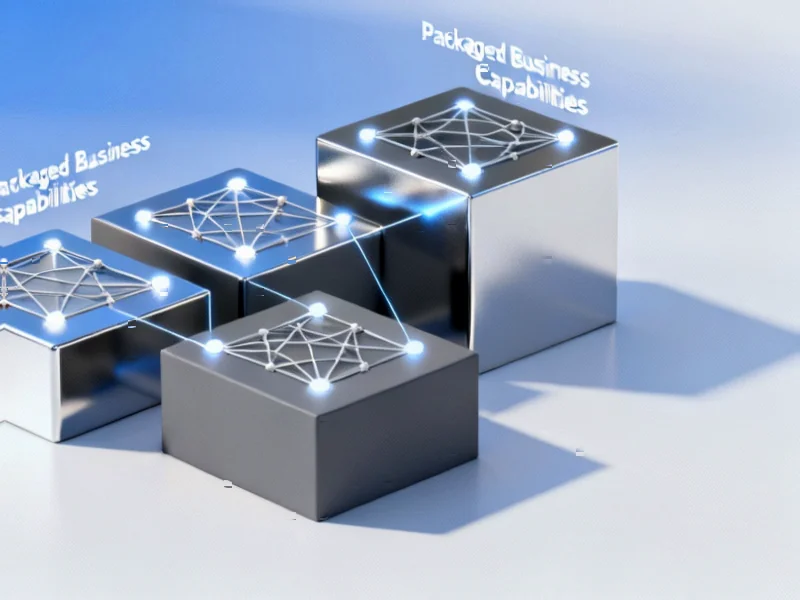The Distributed Monolith Problem
Many organizations that rushed to adopt microservices are now facing an unexpected reality: they’ve built what architects call “distributed monoliths.” According to recent analysis of enterprise cloud patterns, teams are finding themselves coordinating multiple services for every deployment and testing entire systems despite having distributed their infrastructure across cloud services.
Table of Contents
“You adopted microservices hoping for independence and agility, but ended up with complexity spread across systems while remaining bound by monolithic coupling,” one cloud architect familiar with the pattern explained. The fundamental issue, sources indicate, stems from drawing boundaries around technical layers rather than business domains.
Business-Driven Boundaries as Solution
Emerging reports suggest a methodology called Domain-Driven Composable Architecture (DDCA) is gaining traction as an escape route from this architectural dead end. The approach applies Domain-Driven Design principles to define service boundaries by business capability rather than technical convenience.
In practical terms, this means breaking down systems into what analysts call Packaged Business Capabilities (PBCs) – independently deployable units representing discrete business functions. One financial services team reportedly transformed their rewards processing system from a single monolithic service handling everything from merchant categorization to points ledger into five separate PBCs, each with its own data ownership and deployment pipeline.
AWS Implementation Patterns
The methodology maps particularly well to Amazon Web Services according to technical documentation circulating among enterprise architects. Three core patterns form the foundation of this approach on AWS.
Event-driven communication using Amazon EventBridge decouples PBCs, allowing upstream services to continue processing even when downstream capabilities are unavailable. This avoids the cascading failures that plague many distributed systems.
Meanwhile, AWS Step Functions provide resilient orchestration, coordinating workflows across multiple PBCs with explicit error handling. “If the earning rate lookup fails, the workflow can apply a base rate instead of failing the entire transaction,” one implementation guide notes.
For data consistency, the transactional outbox pattern using DynamoDB Streams ensures that business changes and event publishing happen atomically. This solves the common problem where a service updates its database but fails to notify other components.
Operational Realities and Trade-offs
Industry observers caution that DDCA requires significant operational maturity. Moving from a single service to multiple independently deployable PBCs increases management complexity and demands robust monitoring. Sources suggest that teams should expect higher investment in observability tools like Amazon CloudWatch and AWS X-Ray.
The approach appears most appropriate for systems with complex business domains and a need for long-term agility. However, analysts suggest avoiding DDCA for simple CRUD applications or when teams lack domain-driven design expertise. For smaller teams, a well-structured monolith might remain the more practical choice.
Security and Organizational Impact
Security implementation follows a zero-trust model at PBC boundaries, with each capability exposing only what’s necessary and callers being authorized by identity rather than network location. This containment strategy reportedly reduces blast radius if a component is compromised.
Perhaps most significantly, the business-driven approach creates organizational advantages. Teams align to business contexts rather than technical layers, creating autonomy that naturally produces better architecture. Product owners can allegedly compose new offerings from existing capabilities without waiting on multiple teams, accelerating time to market.
Migration Strategy
For teams considering this transition, experts recommend a “strangler fig” migration approach. Start with the highest-value capability, build it alongside the existing system, and gradually shift traffic while monitoring performance. One rewards processing team reportedly began with merchant classification because it changed frequently and had clear inputs and outputs.
Success metrics focus on concrete improvements: faster deployment frequency, shorter regression cycles, and reduced lead time for new features. As one architect summarized, “Composability isn’t about making services small – it’s about making them interchangeable.”
Related Articles You May Find Interesting
- Corporate Earnings Beat Expectations as Markets Eye Fed Decision
- U.S. Antarctic Research Faces Crisis as Key Icebreaker Withdrawn
- Arbor Energy Raises $55M for Carbon-Capture Power Plants That Burn Gas and Biomass
- CFO Role Transforms From Financial Guardian to Strategic Architect
- Microsoft’s Xbox Mode for Windows Handhelds Reveals Enterprise Networking Cuts



